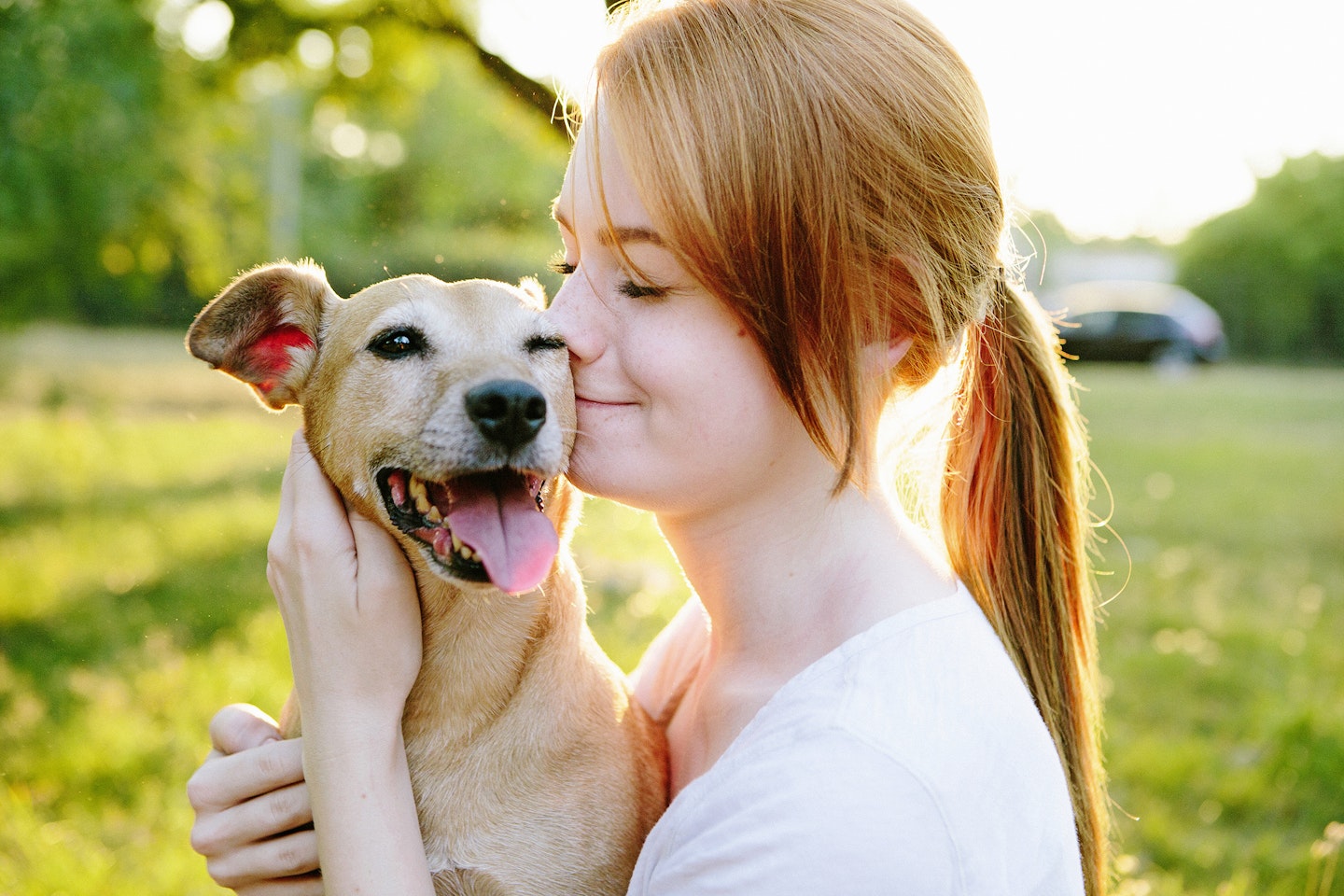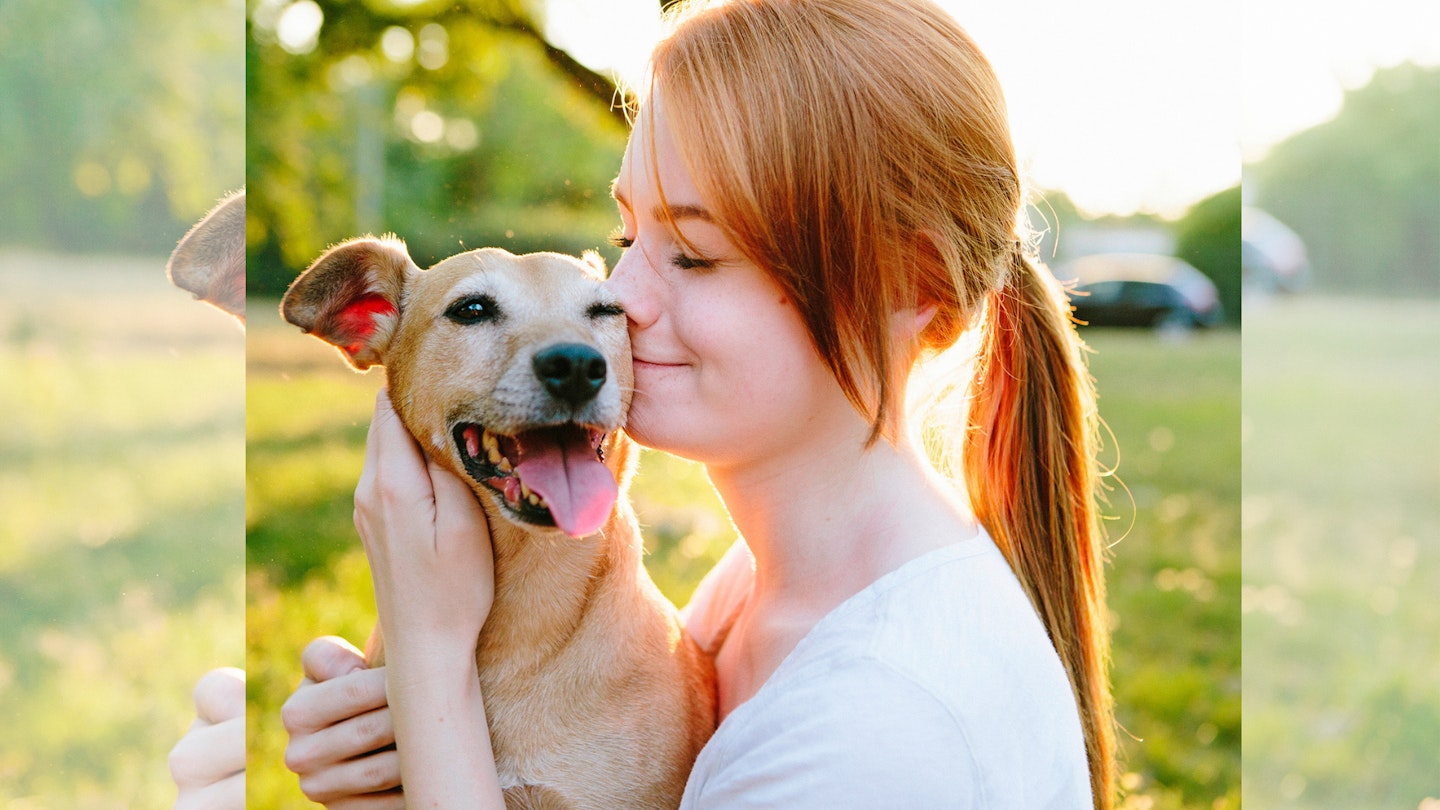With temperatures rising, it’s really important to make sure the animals in our lives are happy and healthy

We might be rejoicing that the sun is finally peeking its head out, but the animals sharing our home don’t necessarily feel the same. From dehydration to heatstroke, hot weather can pose them real problems. Make sure that your pet feels comfortable and contented this summer, by following this expert advice…
Dogs
Pooches need exercise, even when it’s hot. But the RSPCA says to avoid walking them in the hottest part of the day during warmer weather. Instead, take them out in the morning or evening when it’s cooler.
Keep in mind that pavements can get scorching — if it’s too hot to touch with your hand, it’s too hot for a dog’s paws. Look out for limping or refusing to walk, licking or chewing at the paws, pads that are darker in colour or with a part missing, blisters and redness.
To avoid sunburn, use pet-safe sun cream on exposed parts of your dog’s skin, such as the tips of their ears and nose. This is especially important if your dog has white or light-coloured fur, as they can be very vulnerable to getting burnt (this is also true for cats). If you’re unsure of the right product, ask your vet.
Cats
Although cats will often seek shade to stay safe and drink more water, there are extra steps you can take to ensure they stay cool during hot weather.
Our feline friends can find their way into warm areas if they’re looking for a cosy spot, but can become too hot or dehydrated if trapped. So always check greenhouses, sheds and summerhouses before closing them up.
Where safe to do so, keep windows and doors ajar to allow a breeze through the house. If your cat only lives indoors, consider different options such as windows with locking mechanisms, which keep your cat safe but still allow air to flow inside.
In warmer weather, it can help to brush away any dead or excess hair, leaving your cat with a less dense coat — much better for staying cool!
Horses
Horses rely heavily on sweating for cooling, and can produce sweat three times faster than humans. They typically need to drink up to 55 litres of water a day — even more during hot weather. As a result, horses are at high risk of dehydration if they don’t have continuous access to water.
Additionally, providing a salt lick will help replace the salts lost during perspiration.
If your horse will let you, lift their upper lip and look at the gums above the teeth. They should be a healthy pink colour, shiny, moist and slippery. If they’re pale, dry or tacky, this can be sign of dehydration.
Finally, ensure they have access to shade and only ride them at periods of the day when it isn’t so hot.

Fish, amphibians and reptiles
Keep fish tanks and enclosures out of direct sunlight. Check the temperature levels inside fish tanks and in reptile and amphibian enclosures regularly, to ensure you are providing the recommended temperature range for the species. For fish tanks, you may need to carry out water changes to prevent overheating. For ponds, top up the water levels and make sure fish have access to shaded areas created by aquatic plants.
Some reptile owners like to take their reptiles outside during warmer days. It is good for reptiles to be allowed the opportunity to receive natural sunlight, but make sure your reptile is kept secure when doing so — they can move very quickly when they warm up!
Captive birds
Ensure indoor captive birds are out of direct sunlight, and that aviary birds have shaded areas to perch in. All birds need access to clean fresh water, both for drinking and bathing.
Many birds, such as parrots, often enjoy being gently misted with cool water, to cool off and maintain feather condition.
Rabbits and rodents
Remember to keep rabbits and other pets in a safe environment and give them extra water. Avoid leaving cages, runs or hutches in direct sunlight, and don’t house animals in greenhouses, conservatories and other glass structures, as these heat up very quickly and can become dangerous.
Always make sure your pets have plenty of shade in their enclosures — remember that the sun moves across the sky during the day, so areas that were shaded in the morning could be in full sun by the afternoon.
Regularly groom pets to get rid of dead hair. This will help keep them cool, while offering bonding time as well!
You can also freeze a half-full plastic bottle of water and wrap it in a towel so pets can lie against it. For rabbits and guinea pigs, this can be left in their exercise areas. For small rodents, place it on the outside of their enclosure. It’s safest not to put it inside enclosures, in case it leaks.
If you suspect your rabbit or other pet may be suffering from heatstroke, move them to a cool, shaded place, wrap them in a cool, damp towel and phone your vet immediately.
Wildlife
Help wildlife in your garden by supplying fresh, clean water for drinking and bathing.
Grass snakes are most active during June and July, and don't be alarmed if you see one — most are just passing through. They aren’t dangerous, and tend to shy away from humans.
You may find their small leathery white eggs in compost heaps, grass cuttings or sawdust piles. Make sure the eggs are left undisturbed throughout this time.
Livestock
Farm animals should have access to shaded areas and plenty of clean drinking water. Transportation of animals in hot weather should be avoided unless absolutely necessary. If animals are housed during hot weather, buildings must be adequately ventilated and monitored regularly.
And remember…
Never leave pets in caravans, conservatories or outbuildings in the warm weather. Dogs and other pets can overheat and die if left in a hot environment, such as a car. If you see a dog in a car on a warm day, don’t be afraid to call 999 and report it.
For more information, visit rspca.org.uk
10 quick hot-weather tips
1 Don’t let your pet get sunburnt — use a pet-safe sun cream.
2 Ensure animals have access to shade and fresh drinking water at all times.
3 Check every day for flystrike — a painful, sometimes fatal, condition caused by flies laying eggs on another animal.
4 Make an ice lolly from pet-friendly ingredients.
5 Keep fish tanks, hutches and cages out of direct sunlight, and top-up the water levels of ponds.
6 Keep an eye out for wildlife when using lawn mowers or strimmers.
7 Keep pesticides out of reach of animals.
8 Wrap an ice pack or frozen water bottle in a tea towel, or use damp towels for your pet to lie on.
9 Freeze your dog’s water bowl or add ice cubes to your pet’s drinking water.
10 Fill a paddling pool for your dog to play in, or spray them with a hose — but always supervise them around water.
